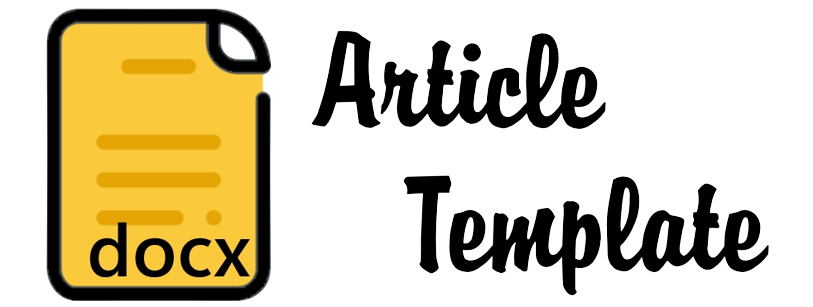Innovation in Developing an Experiential Learning Model to Foster Creativity and Active Learning in Writing Drama Texts
DOI:
https://doi.org/10.55909/jpbs.v4i5.723Keywords:
innovation in developing, experiential learning model, creativity and activity, writing drama textsAbstract
This study aims to explore innovations in the development of experiential learning models to foster creativity and active learning in students. This study is based on the low participation and creativity of students in learning drama texts. This is due to the learning methods used by teachers who are still conventional and do not involve students enough, resulting in teacher-centered learning and minimal space for exploring ideas. Through the development in this study, students are invited to understand the theory and connect it with authentic experiences, thereby actively engaging in reflection, experimentation, and direct application activities. This study uses a classroom action research method that was carried out for two cycles and involved all students in class XI 6 SMAN Mumbulsari. Data collection was carried out through participatory observation, semi-structured interviews, document analysis, and creativity questionnaires. The results of the study showed a significant increase in the aspects of creativity and active learning of students. Initially, using conventional learning methods, the level of student participation was only 30%, with only 30% of students actively participating and asking questions. However, after using the experiential learning model, this figure jumped to 85%. This change in values occurs because students are not only placed as spectators in the learning process, but as co-creators who are responsible for their own learning process.
References
Astuti, Y. K. (2016). Pembelajaran Berbasis Pengalaman (Experiential Learning) untuk Meningkatkan Keterampilan Berpikir Kritis dan Aktivitas Mahasiswa. Jurnal STKIP NU Indramayu, Vol. VII, 148-152.
Azwar, S. (2016). Sikap Manusia: Teori dan Pengukurannya. Yogyakarta: Pustaka Pelajar.
Baker, M. A. & Robinson, J. S. (2016). The Effect of Kolb’s Experiential Learning Model on Succesful Intelligence in Secondary Agriculture Students. Jurnal of Agricultural Education. Vol. 57 (3), 129-144.
Fraenkel, J. R., Wallen, N. E., & Hyun, H. H. (2012). How to Design and Evaluate Research in Education. Eighth Edition New York: McGraw-Hill.
Hatch, E. & Farhady, H. (1982). Reseacrh Design and Statistics. Rowley, Massachusetts, USA: Newbury House Publishers.
Çavdar, G., & Doe, S. (2012). Learning through Writing: Teaching Critical Thinking Skills in Writing Assignments. PS: Political Science and Politics, 45(2), 298-306. https://doi.org/10.1017/S1049096511002137
Cresswell, J. W. (2008). Educational Research: Planning, Conducting, and Evaluating Quantitative and Qualitative Research. New Jersey: Pearson Practice Hall
Kastawaningtyas, A. & Martini, M. (2018). Peningkatan Keterampilan Proses Sains Siswa melalui Model Pembelajaran Experiential Learning pada Materi Pecemaran Lingkungan. Jurnal Penelitian Pendidikan IPA, 2(2), 45-52.
Kemmis, S., dan Mc. Taggart, R. (1988). The Action Research Planner. Deakin University Press.
Kolb, D. A. (1984). Experiential Learning: Experience as the Source of Learning anf Development. Englewood Cliffs, NJ: Prentice Hall.
Pratiwi, D., & Suryadi, A. (2020). Pengaruh Model Experiential Learning terhadap Kemampuan Berpikir Kritis Siswa SMA pada Materi IPA. Jurnal Pendidikan Sains, 8(1), 45-56.
Patton, M. Q. (2022). Qualitative Research & Evaluation Methods (3rd es). Thousand Oaks, California: SAGE.
Prihandono, T., Supriyono, A., Abdillah, U. F., & Sudarti, S. (2023). Analysis of Differentiate Learning with Classroom Action Research to Improve Physics Activities and Outcomes. Jurnal Penelitian Pendidikan IPA, 9(9), 7427–7433. https://doi.org/10.29303/jppipa.v9i9.3426
Rahman, T., dan Fauzi, A. (2021). Experiential Learning sebagai Strategi Pembentukan Karakter Siswa SMA melalui Projek Sosial. Jurnal Pendidikan Karakter, 11(2), 78-90.
Razak, A. (2018). Membaca Pemahaman: Teori dan Aplikasi Pengajaran, Edisi VII Cetakan VIII. Pekanbaru: Ababil Press.
Silberman, M. (2015). Handbook Experiential Learning Strategi Pembelajaran dari Dunia Nyata. Bandung: Nusa Media.
Tarigan, H. G. (2008). Berbicara sebagai Suatu Keterampilan Berbahasa. Bandung: Angkasa.
Torrance, E. P. (1974). Torrance Test of Creative Thinking. Bensenville, Illinois: Scholastic Testing Service.
Sholihah, M., Utaya, S., dan Susilo, S. (2016). Pengaruh Model Experiential Learning terhadap Kemampuan Berpikir Siswa SMA. Jurnal Pendidikan Teori, Penelitian, dan Pengembangan. Vol. 1 (11), 2096-2100.
Susiloningsih, E., Sumantri, M. S., & Marini, A. (2023). Experiential Learning Model in Science Learning: Systematic Literature Review. Jurnal Penelitian Pendidikan IPA, 9(9), 550–557. https://doi.org/10.29303/jppipa.v9i9.4452
Utami, S., Wahyuni, D., & Hidayat, R. (2019). Implementasi Model Experiential Learning untuk Meningkatkan Minat Belajar Sejarah Siswa SMA. Jurnal Ilmu Sosial dan Pendidikan, 3(1), 112-125.
Downloads
Published
How to Cite
Issue
Section
License
Copyright (c) 2025 Joni Pranata, Dzarna, Astri Widyaruli Anggraeni

This work is licensed under a Creative Commons Attribution-NonCommercial-ShareAlike 4.0 International License.







